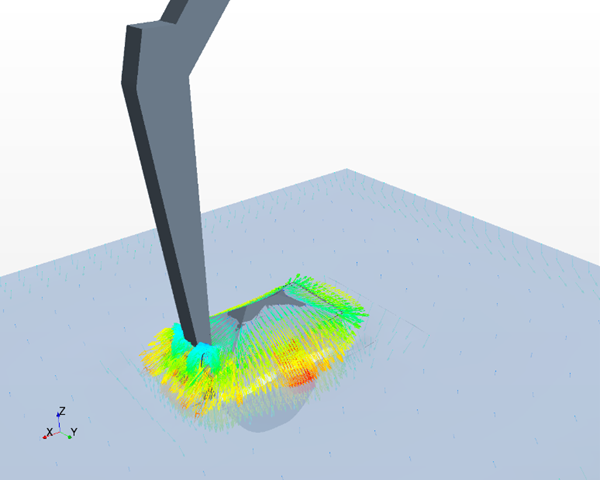DANSIS is an interest organisation for researchers and engineers with a professional involvement in fluid mechanics for industrial applications. DHI regards our DANSIS membership not only as a platform for networking but also as an opportunity for measuring our current level of knowledge and capabilities against state-of-the-art technologies in the Danish engineering community. The 7 October event was held at GEA, a global industrial food processing company in Denmark. It saw a wide range of experts from Danish companies and universities with a special interest in and knowledge about industrial Computational Fluid Dynamics (CFD) in the audience.
Slurries are dense particle suspensions and appear in the field of coastal engineering in connection with marine excavation, mining or land reclamation. Many types of flows and fluid phenomena, ranging from spills during the lifting of the sediment over loading of the hopper, to the sediment laden overflow-plumes leaving the vessel and entering the surrounding environment, are connected with these activities. In order to quantify the different processes and their effects, DHI has recognised how a combination of complex modelling and engineering methods can benefit the analysis of environmental issues and improve the dredger’s production rates.
At the meeting, we presented the CFD tools and explained the ways we utilise their potential. Comparing DHI’s expertise with applications of CFD in the chemical, food and production industry further demonstrated that we are a company which applies advanced state-of-the-art computations intelligently. We do so by adopting a tandem-like strategy, much similar to how we approach consultancy and research, development and innovation: To support commercial projects with realistic predictions, to further develop our methods and MIKE Powered by DHI tools, and to provide high-end products and services with an optimal balance between cost and efficiency.
For a long period, DHI has been participating in a number of large projects where sediment transport and spreading are critical parameters. We will continue to develop new and improved methods and models such as CFD models and MIKE 3 near-field and far-field coupling to minimise the plume and slurry transport, as well as to predict the downdrift impact on the environment.
 |
Example of innovative use of CFD to calculate spill source rates: Loaded backhoe dredger moving up through
the water column. © DHI |